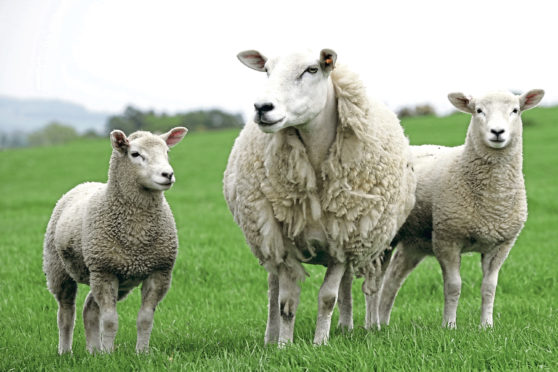A sheep and grassland specialist from SAC Consulting and Scotland’s Rural College (SRUC) is encouraging farmers to weigh their lambs at eight weeks old to see how well they are performing.
The college recently held webinars to highlight the three main challenges holding back lamb growth rate after eight weeks.
Poppy Frater of SAC and SRUC said that lamb growth after eight weeks typically reduces as the nutrition from milk diminishes, while at the same point the lamb is growing, and requires more energy for maintenance, as well as growth.
She said the three main challenges that can hold back growth rate at this stage are feed quality and quantity, gut worms and trace elements.
“Weighing lambs at eight weeks provides a greater understanding of how well lambs are growing and allows farmers to home in on any management issues if lambs are not reaching target,” said Ms Frater.
She advised farmers to weigh in logical groups and make sure they are uniform mobs, and to prevent gut fill weigh mobs at the same time, check scales are accurate and weigh at least 56 lambs per mob.
“Don’t pick the best, random selection from the mob, weigh every sixth lamb,” she added.
“Energy drives lamb performance and ewes milk is the best energy they will receive at 13MJ/kg of ME.
“Make best use of it pre-eight weeks to maximise performance, post eight weeks offer the best pasture to ewes and lambs for example, clover pasture +12ME, average ryegrass/clover pasture 10.5-11ME.
“Avoid stem and dead material in pasture as this is low energy and will dip their growth rate.”
In terms of general pasture management tips, webinar attendees were advised to avoid grazing below five centimetres, graze leafy material and move on legumes and herbs have a quantifiable benefit to growth rates, and minimise stem and dead material.
On the topic of weaning, Ms Frater said twelve weeks seems optimal, but as an example, if the lamb was not thriving, they could be weaned from eight weeks to allocate the best forage to lambs and lean ewes.
“Key to early weaning, is having good quality forage for example, at least high-quality clover or multi species sward,” she said.
“If the ewes are fit and have loads of grass them maybe keep them on their mothers, but this depends on condition of the season.
“The growth rate for a lamb finished at three months would be 424grams/day, where as a lamb finished at 11 months would be 116grams/day.
“The dry matter these lambs would require would be 77kg DM (three months) and 261kg DM (11 months), with some 184kg DM difference, this would be one third of a ewe and lamb requirement. Meaning for three long keep lambs, one more ewe could be run by the business.
“Other costs to the system include additional feed, vaccination, labour etc for the 11-month lamb versus the three-month lamb. There are real system benefits to lambs maximising their growth potential when they are younger and most efficient at liveweight gain.”
Heather Stevenson, veterinary vnvestigation officer at SRUC Veterinary Services, highlighted the issue around worms at this important stage of a lamb’s development.
“Young lambs are very naive to worms as they have not developed immunity to them, so they produce a large number of worm eggs after eating larvae, which in turn results in challenges from pasture,” she said.
“If they are doing well nutritionally, the challenge should not be as severe, but if they have other issues at the same time such as coccidiosis, then farmers are more likely to see signs of disease.”
Farmers were advised to assess the risk of their fields to take the appropriate action to mitigate the issue.
High risk = fields where Nematodirus was a problem last year, fields with ewe or store lambs last autumn, ewes and lambs in the spring. Low risk = cattle only previous year, grazed by non-lactating adult sheep last year, silage.
